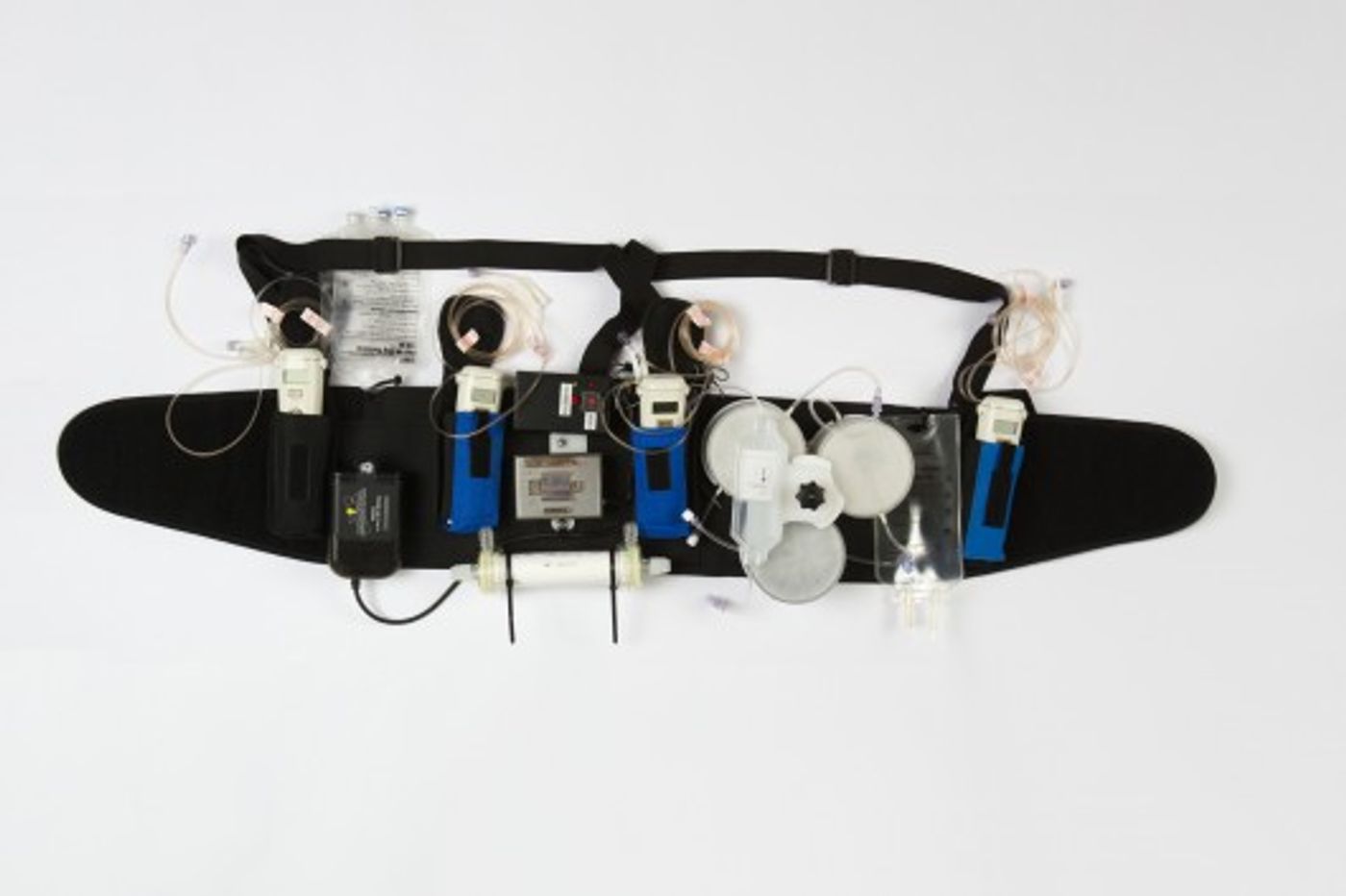Could an artificial kidney device free kidney failure patients from the tethers of the dialysis machines? That’s exactly the hope of
Dr. Victor Gura, researcher and inventor of the
Wearable Artificial Kidney (WAK), a dialysis machine compressed into miniature form.
Dr. Gura presented the results of his small preliminary clinical trial with the WAK device at the annual meeting of the
American Society of Nephrology during Kidney Week. Though ten patients were consented to the trial, only seven received treatment before the trial ended. The patients wore the WAK device for 24 hours, during which time the device was reported to filter blood at the same rate as healthy kidneys. In addition, because of the continuous filtration, patients were encouraged to eat foods that they would normally have had to avoid in order to maintain proper levels of phosphorous and potassium in between dialysis treatments. Dr. Gura reported that his patients did not report any side effects or discomfort while wearing the device.
The unpublished trial was not a complete home run, however. Two of the seven devices were reported to stop working, with details of the malfunctions not yet disclosed. Getting the device to perform consistently and reliably will be key to it moving it forward, especially since the team plans to have the device worn for 7-14 days in the next clinical trial.
Another potential pitfall that Dr. Gura and his team have to seriously contend with is the risk for infection. The device maintains a connection to the body via a catheter to a large vein. This set up presents a few sites for infection, especially if the device is to be worn continuously outside of the hospital. To curb this, patients would need to be trained extensively in the aseptic management and cleaning procedures of their devices.
But despite its technical issues, the WAK device recently secured an
Expedited Access Pathway status from the Food and Drug Administration (FDA). This “fast track” status signals the FDA’s full support of the continued redesign and development of the device. Dr. Gura and his team can expect frequent attention and guidance from the FDA during the entire redesign process. And when the time comes for the team to submit its materials, the FDA will review the WAK device ahead of other projects in the queue.
So could the WAK be the new artificial kidney? The study, though small and very preliminary, demonstrated a big proof of concept: that the device could function continuously while being worn. The device will undergo many more iterations before being marketed. So far, in addition to the technical improvements, the team aims to reduce the weight of the device from 10 pounds down to 5 pounds to make it even less cumbersome. If the redesign and clinical trials go well, Dr. Gura estimates it would take another two years for the WAK device to be available to patients.
This device has the potential to be a game-changer for the 600,00 Americans afflicted with end-stage kidney disease. While kidney organ transplantation is a potent fix, the reality is that there just aren’t enough donated kidneys to go around. Of the 101,189 patients that currently await a kidney transplant, only about 16% of them will receive the organ. The alternative has been dialysis therapy, but while effective, this process is highly disruptive and time-consuming for the patients. If successful, this portable and wearable artificial kidney will significantly improve the quality of life for so many people.
Already one study participant, Chuck Lee, can’t stop singing the praises of this device for the 24 hours that he was able to wear it.
Additional Sources:
CNN,
UW Health Sciences









